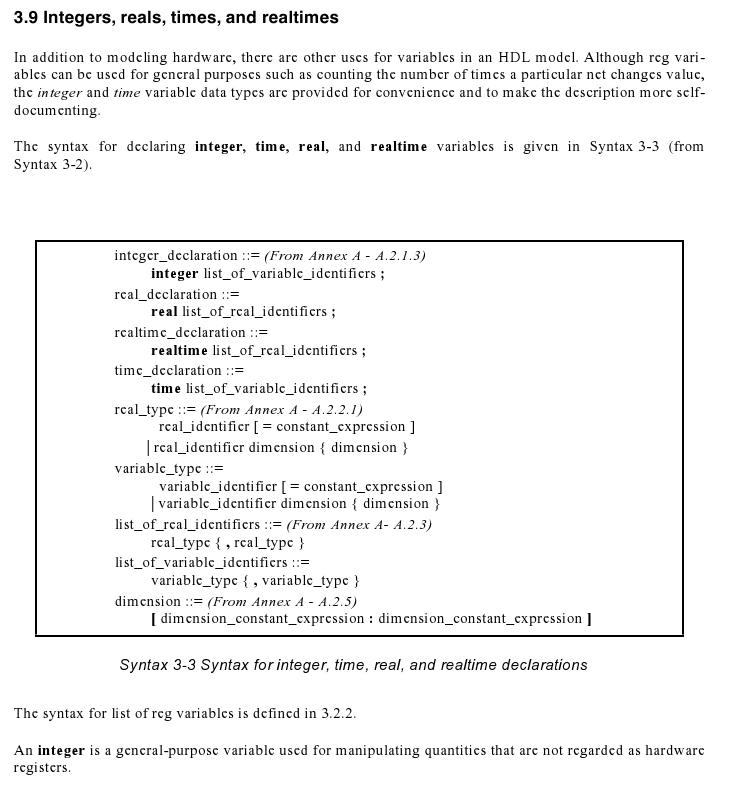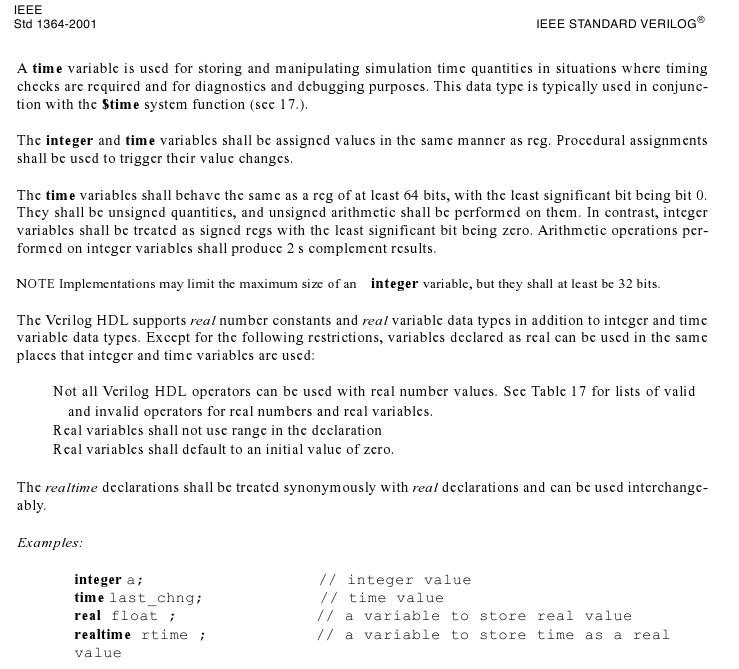swapnil_vlsi
Full Member level 1
verilog integer range
I have a question regarding verilog integer data types. The default
integer size is 32 bit in Verilog. Can we extend it? In VHDL we can
have something like,
Max_Time : in integer range 0 to 255;
How do we express this in Verilog?
Thanks
Swapnil
I have a question regarding verilog integer data types. The default
integer size is 32 bit in Verilog. Can we extend it? In VHDL we can
have something like,
Max_Time : in integer range 0 to 255;
How do we express this in Verilog?
Thanks
Swapnil

